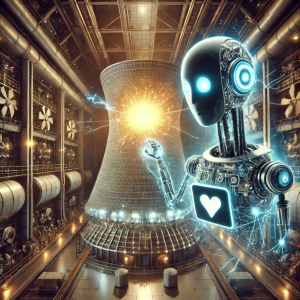“There are things known and there are things unknown and in between are the doors of perception.” — Aldous Huxley
I’m Junior Huxley Westemeier, and welcome to The Sift, a weekly The Rubicon opinions column focused on the impacts and implications of new technologies.
_________________________________________________________
On March 28, 1979, a partial meltdown of the Three Mile Island Unit 2 reactor near Middletown, Pennsylvania, marked the most significant nuclear accident in US history. Only Unit 1 remained online until 2019, when the entire plant shut down.
As of Sept. 20 this year, Three Mile Island has a new owner. It’s not an energy company or government-funded enterprise. Instead, it’s the second largest tech company in the world: Microsoft.
At first, this might seem counterintuitive: why would the creator of Windows and the well-known Office suite need enough nuclear energy to power over 800,000 homes a year? The answer is complicated, but it comes down to two words: artificial intelligence.
Any time you have a conversation with ChatGPT, or in Microsoft’s case, Copilot, you’re connecting to an online model hosted at various server farms across the globe. Hosting these models and processing a user’s request takes massive energy to power the electricity requirements and the systems that manage water used for cooling processors. A simple 20-question conversation with ChatGPT requires around 500ml of water- the equivalent of a 17 oz bottle- to cool machinery. A study from Carnegie Mellon showed a similar statistic. The following photo of an AI chatbot plugged into a nuclear reactor generated by DallE required as much energy as it takes to fully charge my smartphone:

Training models, which happen daily behind the scenes to keep Copilot up to date, have also been found to be environmentally equivalent to running a power plant burning coal for 10 hours. These statistics highlight the real problem: AI models are not environmentally friendly. By resorting to nuclear energy, Microsoft has tapped into a form of energy that won’t damage the environment. In the next few years, we need more renewable sources as AI data centers require increasing amounts of electricity- estimated by 2026 to be 6% of the US’s total energy consumption.
Nuclear-powered AI services are a significant step forward towards a clean-energy future. But it doesn’t mean we can be free to generate images and have conversations with ChatGPT without thinking twice- it will take time to implement these new energy sources.
In 2022, Google’s Finland data centers were powered by 97% clean energy. However, only around 4-18% of the data centers in Asia were powered by clean energy in 2022. It’s a slow process to bring decommissioned nuclear plants online and transition to renewable technologies. For now, it’s important to think about the climate impact of asking ChatGPT or Copilot a single question or generating an image before you create it.